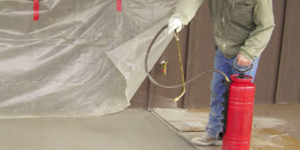As floodwaters in southwest Washington submerged entire Chehalis neighborhoods early December, Justin Farley and Kevin Winkler waved down a team of U.S. Coast Guard rescuers to help a family of five who had abandoned their home. Farley and Winkler, however, stayed put.
“It’s almost reminiscent of Mount St. Helens,” Farley says the next day. “It’s just a big, brown mess.” He says the mud surrounding their concrete home is about a foot thick.
However, despite some muck in the garage, the concrete house remained rock solid while his neighbors in stick-built homes did not fare so well.
Farley estimated that 10 houses in his immediate area in the Boistfort Valley suffered severe water damage: five looked to be destroyed, and all the mobile homes were washed away. Floodwater, in some cases, reached the rooflines. One morning, the area looked like a brown ocean filled with floating debris.
The flood, which hit Dec. 3 and 4, forced hundreds of people to flee when the river crested at almost 10 feet over flood stage. Long stretches of Interstate 5 were under up to 7 feet of water, the Seattle Times reported.
“We’re doing OK here for two reasons,” Farley says. “One is that we built above the 100-year flood plain.” The other, he says, is that the home is built on a slab, “an excellent footing and foundation for the house.”
If the floodwaters had entered the house, it would have been far easier to clean up, he says, as all the flooring is concrete and could have been hosed down. The exterior walls, also made of concrete, could have withstood the water as well.
The way the house survived the flood is another testament to the durability of ICF construction, Farley says. Even when rescuers arrived, “I felt comfortable enough to stay here.”















